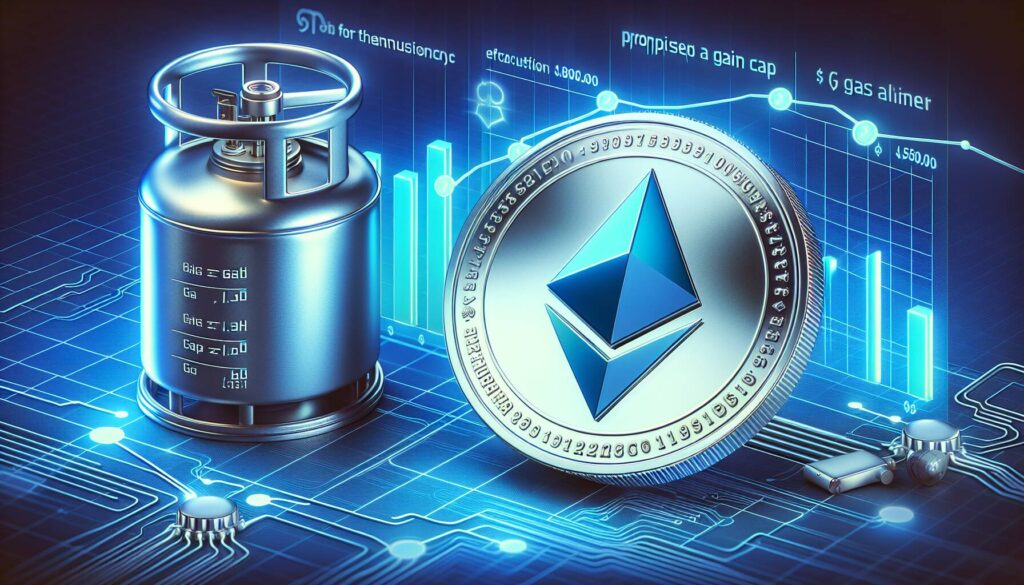A recent proposal in the Ethereum community has sparked significant discussion among developers and users alike. Co-authored by Ethereum co-founder Vitalik Buterin and developer Toni Wahrstaetter, the proposal known as EIP-7983 seeks to implement a hard cap on the maximum gas a single transaction can consume. This initiative aims to enhance network stability and improve the overall efficiency of the Ethereum blockchain for a variety of applications.
The proposal suggests a new limit of 16,777,216 gas (the equivalent of (2^{24})), a stark contrast to the current structure that allows a single transaction to use the entire block gas limit. As it stands, a transaction can consume as much gas as is available in a block, posing performance and security challenges.
The current design creates issues when large transactions dominate the gas availability, negatively affecting the distribution of workloads across the network. This can lead to inefficiencies during block execution, making it challenging for developers focused on zero-knowledge virtual machines (zkVM) to process large transactions concurrently. Instead, they often have to split these transactions into multiple parts. Implementing a gas cap could address this imbalance significantly.
Proponents of EIP-7983 argue that the proposed cap would streamlining transaction handling, stating that “16,777,216 is nice because it makes it easier to subdivide things, potentially simplifying downstream engineering.”
Additionally, supporters believe that this move aligns with Ethereum’s long-term goals of enhancing modularity and ensuring provability within its operation. Although the cap may necessitate breaking down some larger transactions, like contract deployments, into smaller segments, authors of the proposal contend that most typical activities are already well below this threshold. EIP-7983 builds upon earlier efforts to manage resources effectively, such as EIP-7825, reflecting a growing consensus on the need for the Ethereum base layer to impose stricter execution limits as the network continues to scale.
As of now, EIP-7983 remains in draft status and is open for wider community feedback, marking an important step in Ethereum’s ongoing evolution and enhancement efforts.

New Ethereum Proposal EIP-7983: Hard Cap on Transaction Gas Consumption
The following are the key points related to the new Ethereum proposal EIP-7983:
- Proposal Overview: EIP-7983 aims to impose a hard cap of 16,777,216 gas per transaction.
- Current Design Issues:
- Transactions can consume the entire block gas limit, causing performance and security challenges.
- Large transactions disrupt workload distribution and hinder block execution efficiency.
- Impact on Zero-Knowledge Virtual Machines: Difficulties in processing large transactions have led to reliance on multiple smaller transactions.
- Benefits of the Proposed Cap:
- Simplifies transaction subdivision, easing downstream engineering challenges.
- Aligns with Ethereum’s shift towards modularity and provability.
- Real-World Activity Compliance: Most activities are expected to remain below the proposed gas limit, minimizing edge cases.
- Relation to Previous Initiatives: Builds on earlier proposals like EIP-7825, promoting stricter execution guarantees as Ethereum scales.
- Community Engagement: The proposal is currently in draft status and open for broader community review.
Ethereum’s EIP-7983 Proposal: A Game Changer or a Necessary Evil?
The recent Ethereum proposal, EIP-7983, co-authored by influential figures Vitalik Buterin and Toni Wahrstaetter, is making waves in the blockchain community. By introducing a hard cap on gas consumption, this proposal aims to enhance network stability and usability for specific applications. Compared to current systems that allow transactions to drain the entire gas limit, this measure could fundamentally alter how developers approach transaction processing.
Competitive Advantages: The proposed cap of 16,777,216 gas tokens on individual transactions offers several distinct benefits. It simplifies development for zero-knowledge virtual machines (zkVM), allowing for more streamlined processing. As developers grapple with issues related to workload distribution and execution efficiency, the limit could pave the way for better modularity—an essential objective for Ethereum’s long-term strategy. Additionally, proponents argue that the predefined ceiling mirrors real-world usage patterns, as most activities remain below this threshold, minimizing disruption for existing operations.
Disadvantages: On the flip side, enforcing such a cap might force developers to segment larger transactions into multiple chunks, potentially complicating contract deployments and adding layers of complexity. This could create friction for users accustomed to seamless interactions, especially if messages about these changes aren’t communicated effectively. Furthermore, early adoption could lead to confusion as the community adjusts to the new framework.
This proposal stands to benefit developers focused on efficiency and scalability, particularly those working with parallel execution engines, who will likely enjoy improved resource optimization. However, it may pose challenges for businesses that rely heavily on large transactions, as they might need to rethink their operational approaches to fit within the new guidelines. As the Ethereum community debates the implications of EIP-7983, its successful rollout could either empower innovation or hinder established processes, highlighting the delicate balance between progress and practicality in blockchain technology.

















